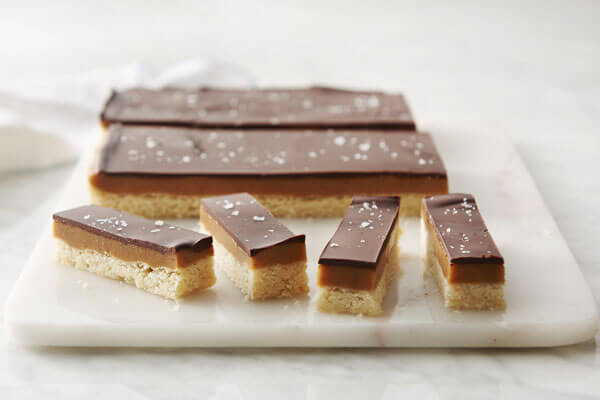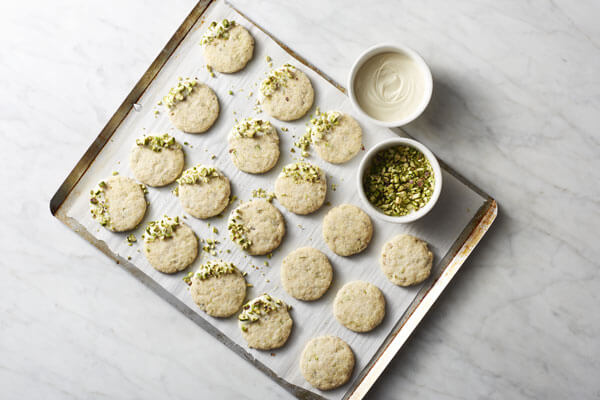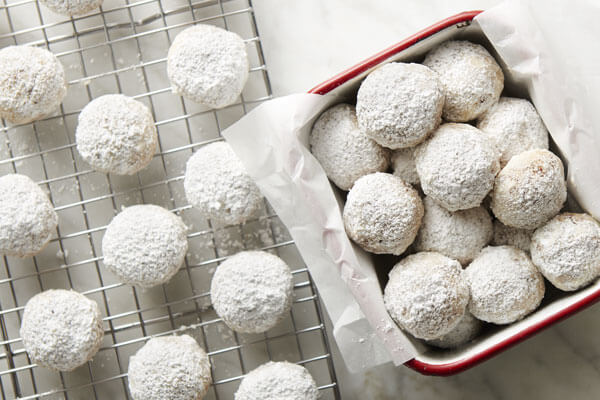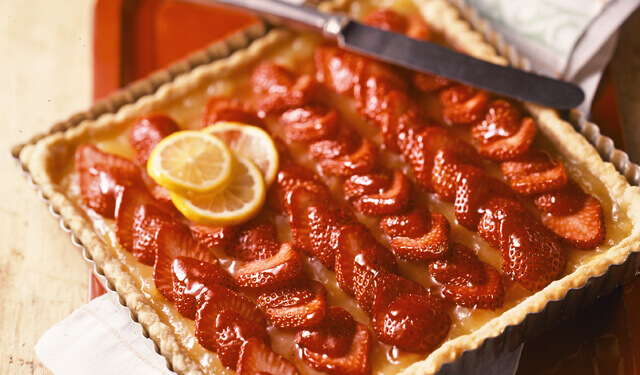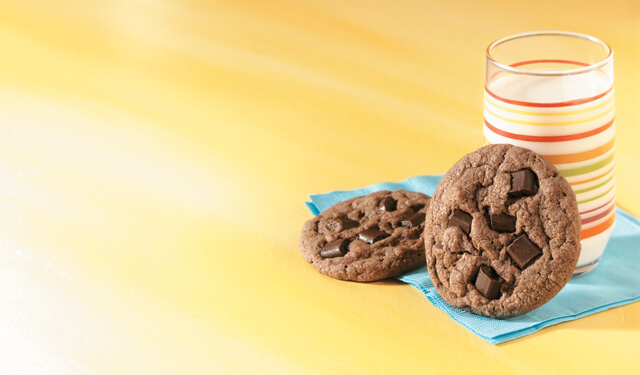

Cookie Baking Tips: From Our Kitchen to Yours
Fresh-baked cookies on your mind? Read on for our expert tips on how to ensure cookie baking success. We cover ingredients, baking and storage so you can crush that cookie baking experience every time!
 by
Land O'Lakes Test Kitchen
by
Land O'Lakes Test Kitchen
 by
Land O'Lakes Test Kitchen
by
Land O'Lakes Test Kitchen
Ingredient Tips
Millionaire Shortbread Bars
Butter or Margarine
- To soften butter, let sit at room temperature 30-45 minutes before mixing. To soften quickly, cut butter into chunks and allow to soften at room temperature 15 minutes.
- Use margarine directly from refrigerator.
- Do not soften butter or margarine in microwave.
- Do not use low-fat spreads (65% or less fat) in place of butter or margarine. Low-fat spreads have higher moisture content and may cause cookie dough to be too soft and stick to cookie sheet.
Flour
- All-purpose flour is most commonly used.
- Flour is “pre-sifted” and does not require additional sifting unless recipe indicates flour should be sifted.
- Use nested metal or plastic measuring cups for measuring flour.
- Stir flour to lighten it. Lightly spoon flour into measuring cup and level with edge of knife.
Eggs
- Use fresh, large eggs.
- Use room temperature eggs so they don’t harden the butter. Speed up the process by putting eggs (in their shells) in bowl of warm tap water for 6-8 minutes.
Cookie Baking Tips
Peanut Blossom Cookies
Baking
- It is best to make two separate batches instead of doubling a recipe.
- Mix dough just long enough to combine dry ingredients as over-mixing will make cookies hard.
- If dough is too soft, add 1-2 tablespoons flour.
- If too dry, add 1-2 tablespoons milk.
- Chill dough according to recipe directions.
- A test cookie will give a good indication of your dough's condition. Bake one cookie: If it spreads too much, refrigerate dough 1-2 hours or until well-chilled.
- Place one cookie sheet at a time in middle of center rack in oven. Baking more than one sheet of cookies at a time may cause overbaking of some and underbaking of others.
- Make sure there is about two inches of space around all sides of the cookie sheet to allow for good air circulation.
- Take care to not overbake cookies.
- Transfer finished cookies to cooling racks. Cookies will continue to bake and become more firm as long as they remain on a hot sheet.
Equipment
- Use shiny, aluminum cookie sheets that allow at least two inches of space between pan and oven walls.
- Dark cookie sheets or insulated sheets are not recommended.
- Line with parchment paper for easier clean up.
- Only grease or spray a cookie sheet if directed to do so in the recipe.
- If recipe states to grease cookie sheets, do not use butter or margarine as they may burn. Use shortening or a nonstick baking spray.
Brown Butter Pistachio Thins
Storing
Baked Cookies—up to 1 week
- Store at room temperature.
- Store soft cookies in container with tight-fitting lid.
- Store crisp cookies in container with loose-fitting lid.
- Store soft, cake-like, frosted or decorated cookies with waxed paper between layers for protection.
- Store bar cookies in the pan in which they were baked; cover pan tightly with aluminum foil or plastic food wrap.
Snowball Cookies
Baked Cookies—up to 2 months
- Both frosted and unfrosted cookies may be frozen for up to 2 months. We recommend that you freeze cookies unfrosted. (Sometimes frozen frosted cookies become moist under the frosting.) Allow time to thaw and frost before serving.
- Arrange cookies in a container lined with plastic wrap or aluminum foil. For best results, wrap cookies individually in plastic wrap.
- Store in airtight container. Tightly seal container, label and freeze.
- Thaw cookies by allowing them to stand loosely covered on serving plate for about 20 minutes.
Cookie Dough
- Most cookie doughs can be refrigerated or frozen. Place dough in airtight containers. Store in the refrigerator up to two days, or freeze up to three months. Thaw the dough in the refrigerator until it's just soft enough to use.
- Freeze slice-and-bake cookie dough in rolls.
- Scoop or spoon dough onto a cookie sheet lined with aluminum foil or parchment paper. Freeze until solid (up to 1 hour), and then place individual dough balls into resealable plastic freezer bags.
- Thaw cookie dough in the refrigerator until it’s just soft enough to use. Bake the frozen slices or balls as indicated in the recipe, adding a few minutes to the baking time.
Candy Cane Biscotti
Share Your Thoughts
Did you find this article helpful? Has it inspired you? What else would you like to know?


